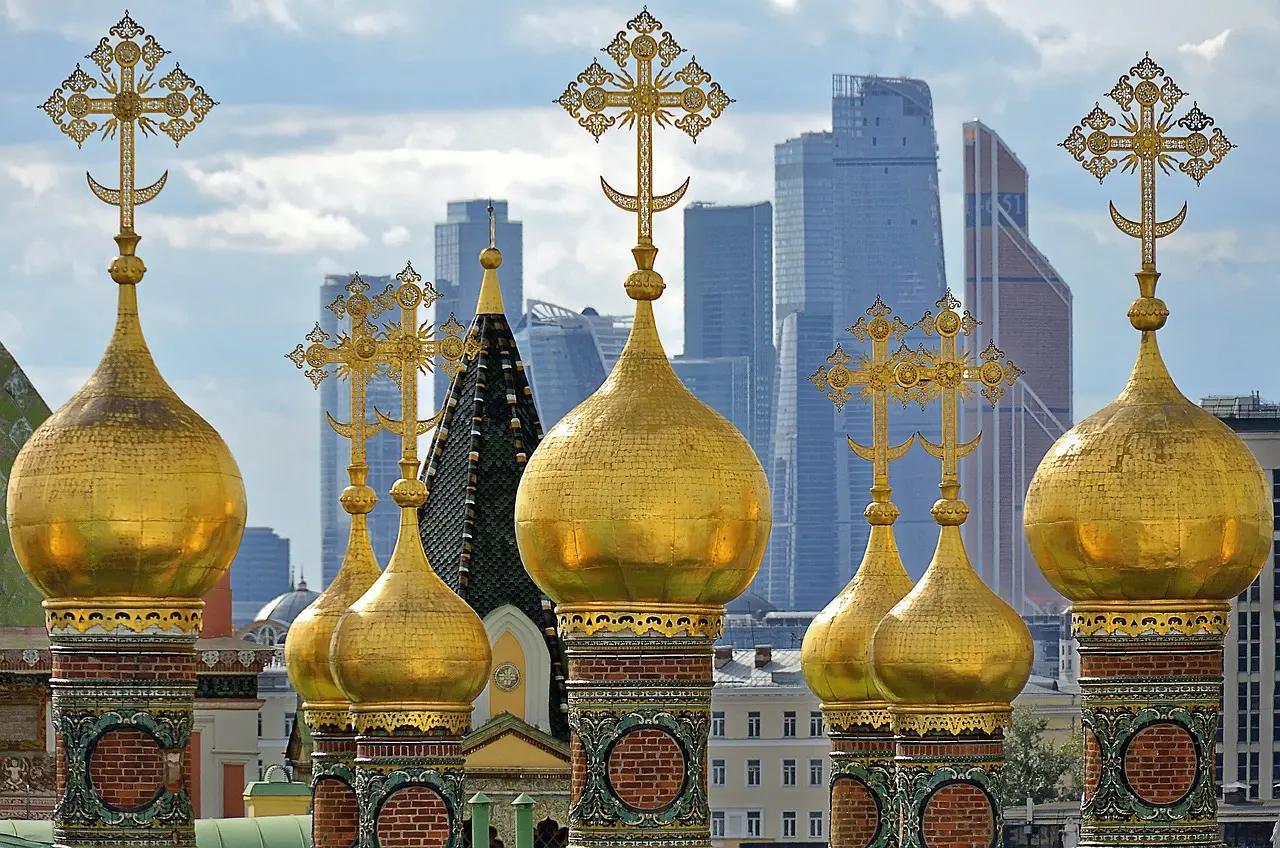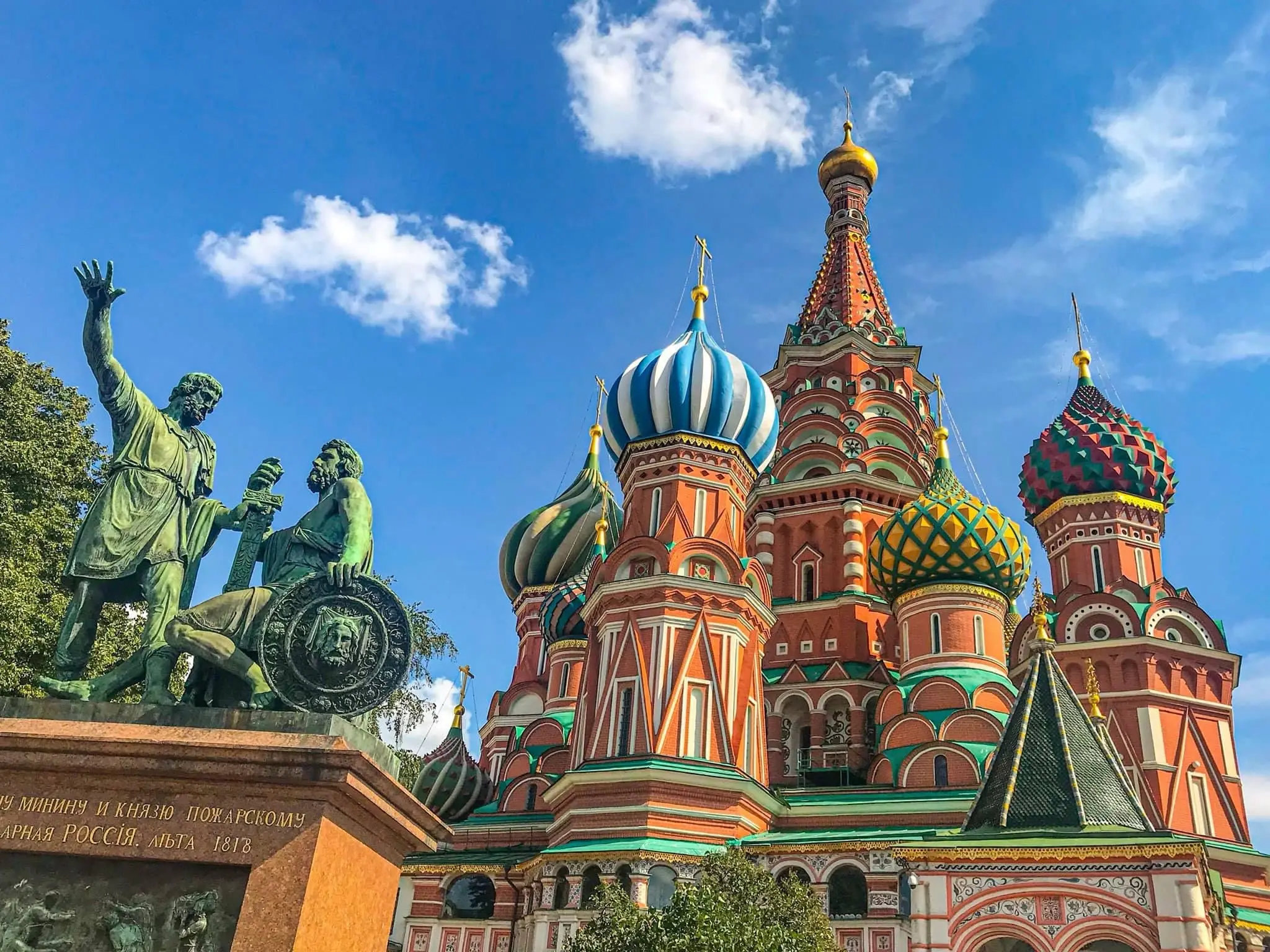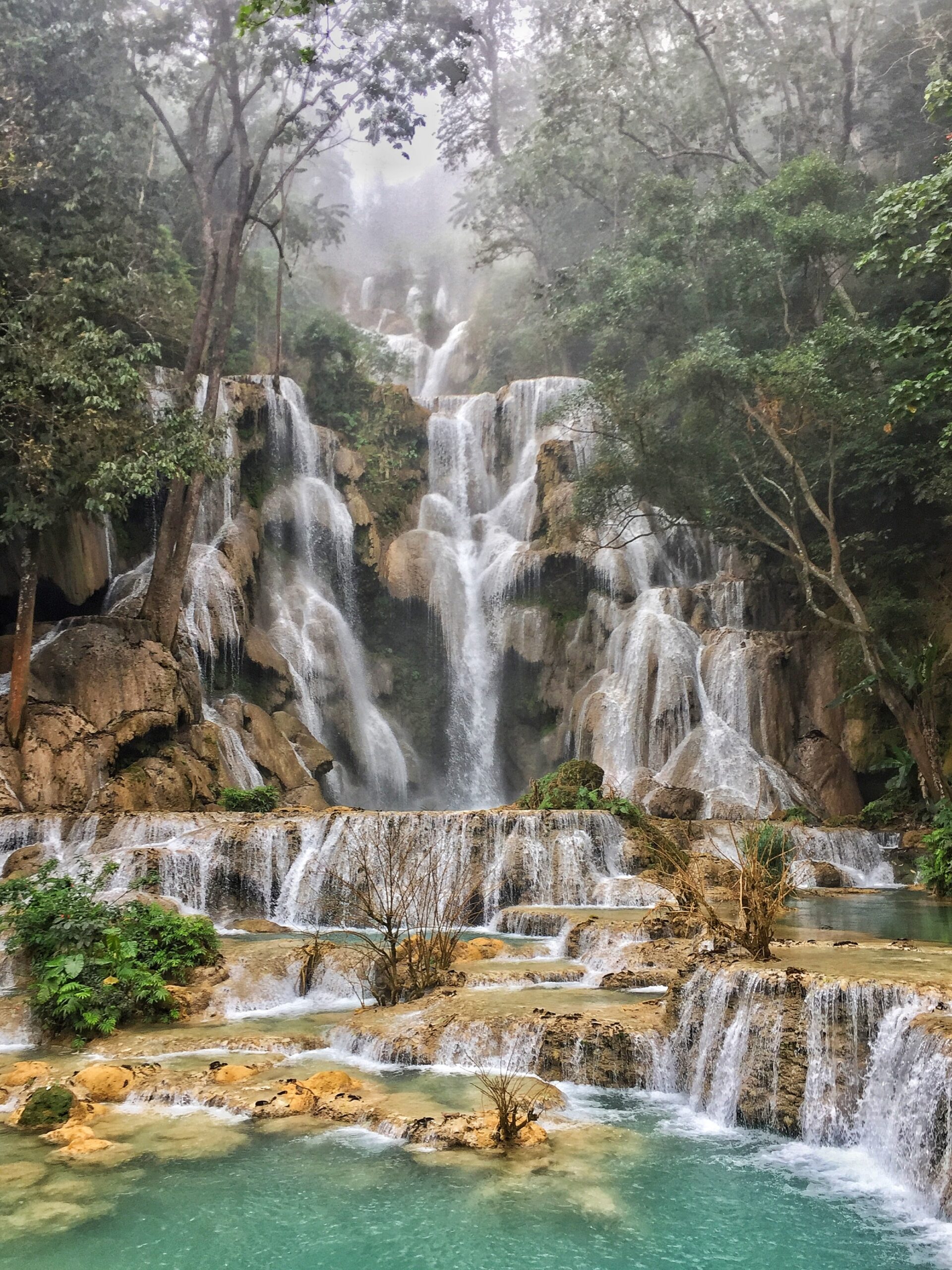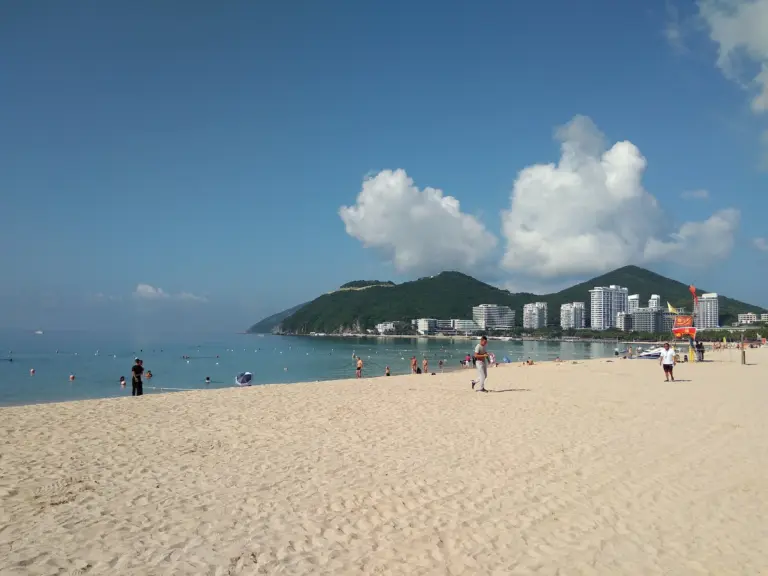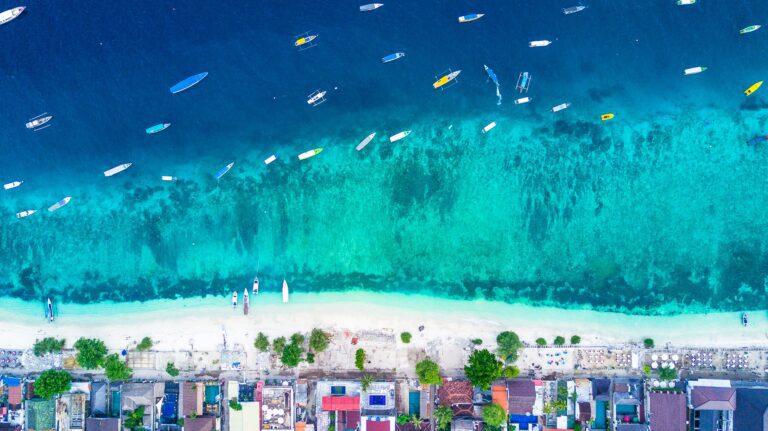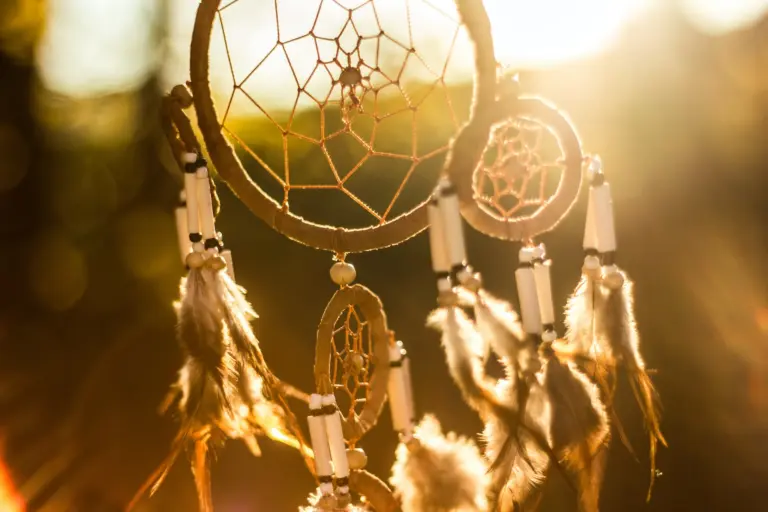Moscow isn’t just any city.
Here, the tales of czars and revolutionaries echo through streets that now pulse with the energy of modernity.
It’s a place where the shadow of the Kremlin towers over futuristic skyscrapers. A city that doesn’t just belong to Russia, but to the world. A stage where history has been played out and the future is still being written.
Walk its streets, and know that you walk through chapters of a living history book, each page brimming with stories waiting to be discovered, ready to envelop you in the mystery, majesty, and magic that is Moscow.
Table of Contents
Toggle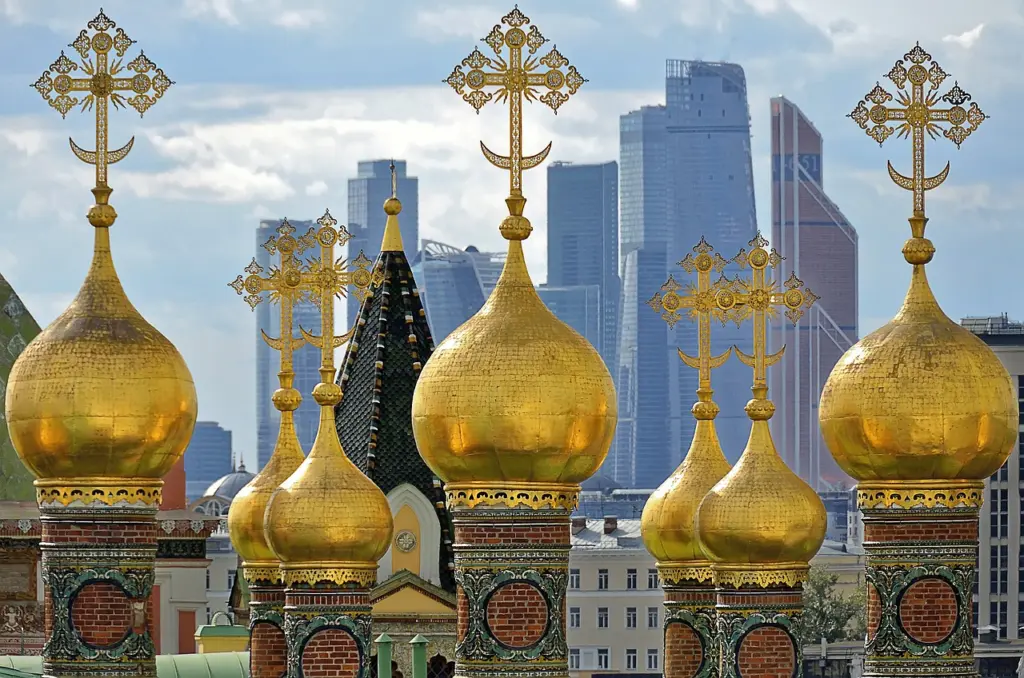
History of Moscow
The history of Moscow, stretching back over 870 years. This grand city, founded in 1147 by Prince Yuri Dolgorukiy, has evolved from a modest wooden settlement into the vibrant capital of Russia.
Moscow started as a small trading post on the banks of the Moskva River. By the end of the 15th century, under the rule of Ivan III (Ivan the Great), Moscow had become the capital of the Grand Duchy of Moscow, casting off the yoke of Mongol rule and laying the foundation for the Russian state.
The 16th century, during the Tsarist era, saw the transformation of Moscow into the capital of a unified Russian state under Ivan IV (Ivan the Terrible), the first ruler to be crowned as Tsar.
In the 19th century, the city was occupied and then razed by Napoleon’s French forces in 1812, a pivotal event immortalized in Tolstoy’s “War and Peace.”
The 20th century was marked by the Russian Revolution of 1917, after which Moscow regained its status as the capital of the country, now the Soviet Union. The city underwent massive industrialization and urbanization, symbolized by the construction of the Moscow Metro and the expansion of Soviet-era architecture which continued until the fall of the Soviet Union in 1991.
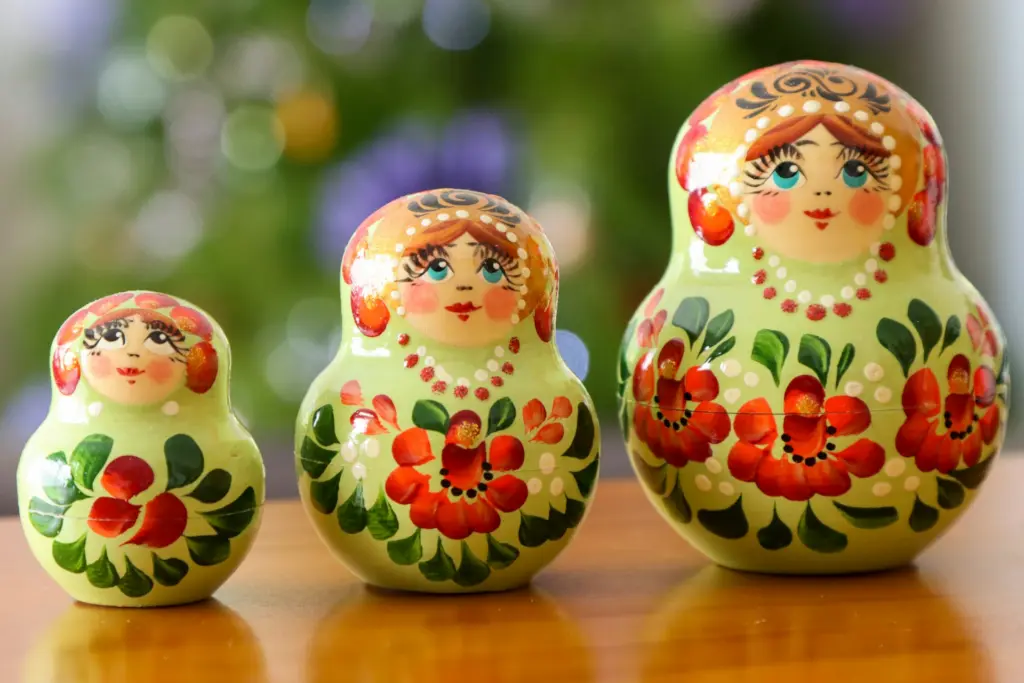
Russian Culture Overview
Russian culture is deeply rooted in history yet constantly evolving. This is a world where the literary masterpieces of Tolstoy and Dostoevsky and the timeless performances of the Bolshoi Ballet coexist with contemporary art that adorns the streets and galleries.
Traditional crafts like the Matryoshka Doll have their earned their place as iconic symbols yet there’s plenty more to these dolls than it meets the eye. From having roots in Slavic Paganism to having a syncretic blend with modern Christianity, Russian culture is as unique as it can be!
Keen to learn more? Check out my article on Russian Culture which offers more insights into the various aspects that make up such a dynamic national identity.
Is Moscow Safe to Visit in 2024?
No, traveling to Moscow presents several safety concerns due to the ongoing war with Ukraine and the subsequent geopolitical tensions. The political situation in Moscow is tenuous, with the Russian government showing a growing tendency towards repression. Foreigners are not exempt from this risk, and there have been instances where foreign citizens have been detained.
The impact of international sanctions has led to shortages in Moscow, complicating everyday transactions as foreign bank cards do not work, and foreign sanctions have made obtaining certain goods more difficult.
Although Moscow traditionally has a moderate crime rate, with most crimes being non-violent in nature, the rate of armed violence and crime involving weapons has increased since the war.
Given these factors, it is currently advised not to travel to Moscow until after the war with Ukraine is over, due to the high risk of arbitrary detention and state repression.
The travel logistics are also more complicated now, as many major airlines have suspended flights to Russia, and diplomatic tensions have made obtaining visas difficult.
Best Places to Visit in Moscow

1. Red Square
Red Square, the vibrant heart of Moscow, is a historical gem that dates back to the 15th century.
Originally Moscow’s primary marketplace, it was also a site for public ceremonies and proclamations. The name “Red” in Russian, “Krasnaya,” originally meant “beautiful,” this meaning later intertwined with the color red associated with communism.
If you only have 1 day to visit Moscow then you would most likely find yourself here amongst everyone else visiting the city. Around the Red Square, you can find most of the city’s must-see sights including St. Basil’s Cathedral and the Kremlin. You’ll also find plenty of Chinese tourists almost everywhere.
You can easily spend the whole day here checking out the various establishments, many of which we will be covering here.

2. Lenin's Mausoleum
Vladimir Lenin, whose embalmed body lies within this mausoleum, was the leader of the Bolshevik Party. Lenin played a central role in the October Revolution of 1917, which led to the fall of the Russian Empire and the rise of the Soviet Union.
The Mausoleum, constructed shortly after Lenin’s death in 1924 was designed by Alexey Shchusev. It’s a stark, pyramid-like structure made from red granite and black labradorite, reflecting the austere aesthetic of Soviet architecture. The interior, where Lenin’s body is preserved, is typically dimly lit.
Though I must warn you that the lines can be insanely long, and only for a few seconds glimpse, just some things to consider if you are short on time and want to explore other areas around Moscow.
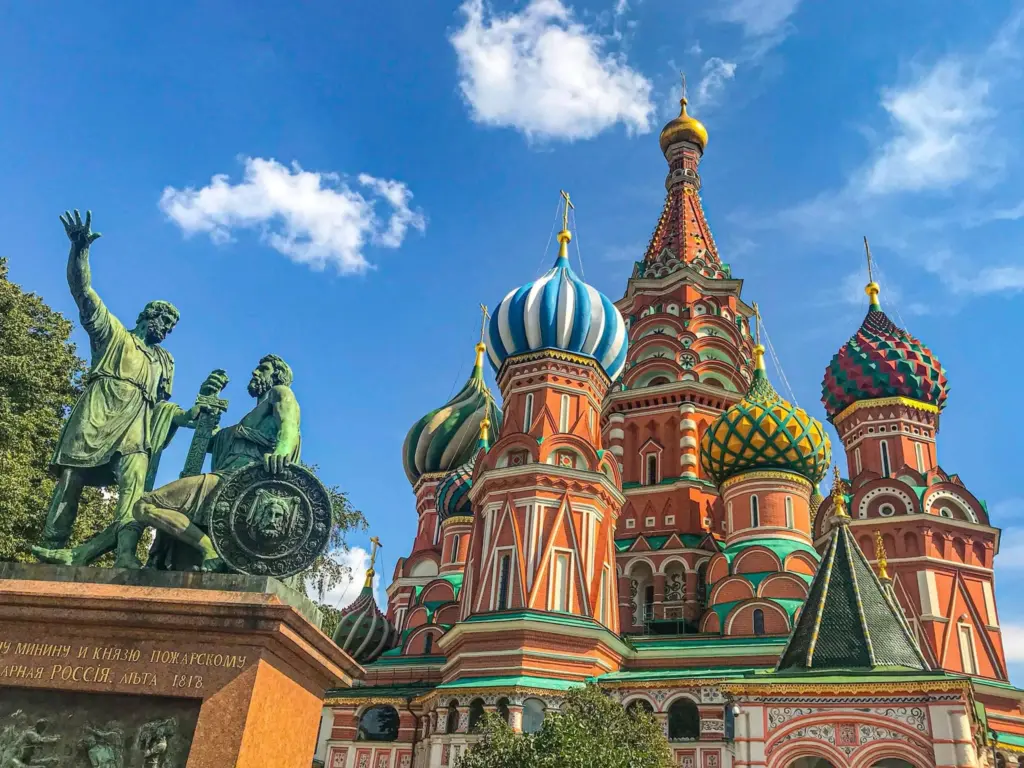
3. St. Basil's Cathedral
St. Basil’s Cathedral is officially known as the Cathedral of Vasily the Blessed, built between 1555 and 1561 under the orders of Ivan the Terrible.
The cathedral was constructed to commemorate the capture of Kazan and Astrakhan, marking Russia’s conquest of the Khanate of Kazan.
This architectural masterpiece is renowned for its vibrant, onion-shaped domes, each uniquely patterned and colored, creating a visual spectacle unlike any other. The design is a fusion of Russian architectural styles and a departure from the traditional Byzantine architecture of the time, making it a groundbreaking achievement in Russian architectural history.
The interior of St. Basil’s Cathedral is equally captivating, with a maze of galleries and nine small chapels, each adorned with intricate frescoes. The central chapel is dedicated to St. Basil, a “holy fool” venerated in the Orthodox Church. The cathedral’s layout, designed to represent the medieval concept of the Heavenly City, adds a layer of spiritual symbolism to its physical beauty.

4. Alexander Garden
Alexander Garden was established in 1821 by Tsar Alexander. The garden was part of a national memorialization following Russia’s victory over Napoleon. It was one of the first urban public parks in Moscow and has since been a beloved spot for locals.
Spanning along the Kremlin’s walls, the garden is divided into three distinct areas, each offering a unique ambiance. The Upper Garden, nearest to the Kremlin, is home to the Tomb of the Unknown Soldier.
The Middle Garden features the ornate Kutafia Tower of the Kremlin, while the Lower Garden provides a peaceful stroll along the bank of the Moskva River.

5. The Kremlin
The Kremlin.
A symbol of Russian power, stands as a monumental fortress in the heart of the city.
Dating back to the 14th century, it has been the residence of Russian tsars, the seat of the Soviet government, and currently serves as the official residence of the President of Russia. The Kremlin’s walls and towers, some of which date back to the 15th century, encircle a complex of palaces, cathedrals, and government buildings.
Inside the Kremlin, you can explore the Cathedral Square, a breathtaking ensemble of cathedrals where Russian tsars were crowned. These include the Cathedral of the Annunciation, the Cathedral of the Archangel, and the Cathedral of the Assumption.
It’s a symbol of Russian statehood and a key witness to the nation’s turbulent history, from the rise of the Russian Empire to the Soviet era and into the present day.

6. Cathedral of Christ the Saviour
The Cathedral of Christ the Saviour stands as a grand symbol of Russian Orthodoxy. This magnificent cathedral, originally commissioned after the defeat of Napoleon in 1812, has a tumultuous history. The original cathedral, completed in 1883, was destroyed in 1931 during the Soviet era, only to be painstakingly reconstructed in the 1990s, following the fall of the Soviet Union.
Today’s cathedral, reconsecrated in 2000, replicates the original 19th-century design. It is the tallest Orthodox Christian church in the world! The cathedral also features an observation platform, offering panoramic views of the city, including the Kremlin and the nearby Moskva River.

7. Kazan Cathedral
The Kazan Cathedral is dedicated to the icon of Our Lady of Kazan, and it’s one of the most revered cathedrals in Russian Orthodoxy.
Originally built in the 1630s to commemorate the liberation of Moscow from Polish invasion, Kazan Cathedral was demolished in 1936 under Soviet anti-religious campaigns. In a symbolic gesture reflecting the revival of religious traditions in post-Soviet Russia, the cathedral was rebuilt in the 1990s, replicating the original 17th-century design.
The interior of the cathedral, though modest compared to some of Moscow’s larger churches, is beautifully adorned with icons, including a replica of the revered Our Lady of Kazan icon.
Hidden Gems in Moscow

8. Dormition Cathedral
The Dormition Cathedral, also known as the Cathedral of the Assumption, is found within the walls of the Kremlin. Built between 1475 and 1479 by the Italian architect Aristotele Fioravanti, the cathedral is renowned for its harmonious blend of Italian Renaissance and traditional Russian architecture.
As the main cathedral of the Russian Orthodox Church for many centuries, the Dormition Cathedral has been the site of significant events in Russian history. It was here that Russian tsars were crowned, and it served as the spiritual heart of the nation during the time of the Tsardom and the Empire.

9. Marshal Zhukov Monument
The Marshal Zhukov Monument is a striking tribute to one of the Soviet Union’s most celebrated military figures. Georgy Zhukov, played a huge role in World War II, particularly in the defense of Moscow and the eventual victory over Nazi Germany.
Unveiled in 1995 to commemorate the 50th anniversary of the victory in the Great Patriotic War (World War II), the monument depicts Marshal Zhukov mounted on a horse, symbolically trampling over the standards of the defeated Nazi army.
The monument, created by sculptor Vyacheslav Klykov, is made of bronze and stands on a high pedestal. It is an imposing figure, capturing Zhukov’s determination and strength.

10. Nikol'skaya Ulitsa
Nikol’skaya Ulitsa is a vibrant street that connects Lubyanka Square and Red Square.
Known for its stunning 19th-century architecture, Nikol’skaya Ulitsa is lined with ornate buildings that house a mix of high-end shops, quaint cafes, and restaurants. It was once home to many of Moscow’s old bookstores and publishing houses, earning it the nickname “Moscow’s Book Row.”

11. World Clock Fountain
The World Clock Fountain is found near the All-Russia Exhibition Centre (Vystavka Dostizheniy Narodnogo Khozyaystva or VDNKh), is a lesser-known attraction that captures the essence of Soviet-era engineering. This unique fountain is also known as the Fountain of the International Time.
Constructed in the 1970s, the World Clock Fountain is not just a water feature; it’s an elaborate timepiece that displays the current time in major cities across the globe. The clock mechanism is ingeniously integrated into the design of the fountain, with a large, rotating globe at its center, surrounded by clocks showing the time in different time zones.

12. Cathedral of the Archangel
The Cathedral of the Archangel, dedicated to the Archangel Michael, patron saint of warriors, was constructed from 1505 to 1508 under the supervision of the Italian architect Aloisio da Milano.
It stands out for its distinctive Russian-Byzantine style, a departure from the Italian Renaissance influences prevalent during its construction.
The Cathedral of the Archangel served as the burial place for Moscow’s grand princes and tsars, until the capital was moved to St. Petersburg. Its interior is a solemn and sacred space, housing the tombs of several notable Russian rulers, including Ivan the Terrible.
Top Things to Do in Moscow

13. Visit the State Historical Museim
The State Historical Museum was established in 1872 to commemorate the coronation of Alexander II. The museum’s striking red-brick building, designed by Vladimir Osipovich Sherwood and Alexey Viktorovich Shchusev, is a masterpiece of Russian neo-Russian architecture.
Inside, the museum houses an extensive collection spanning the entire history of Russia, from ancient times to the present day. Its exhibits include prehistoric artifacts, ancient Russian art, relics from the Russian Empire, and items from the Soviet era. The museum’s vast array of displays provides an in-depth look at the cultural, social, and political evolution of Russia.
For anyone interested in the history of Russia, this is a must-visit!
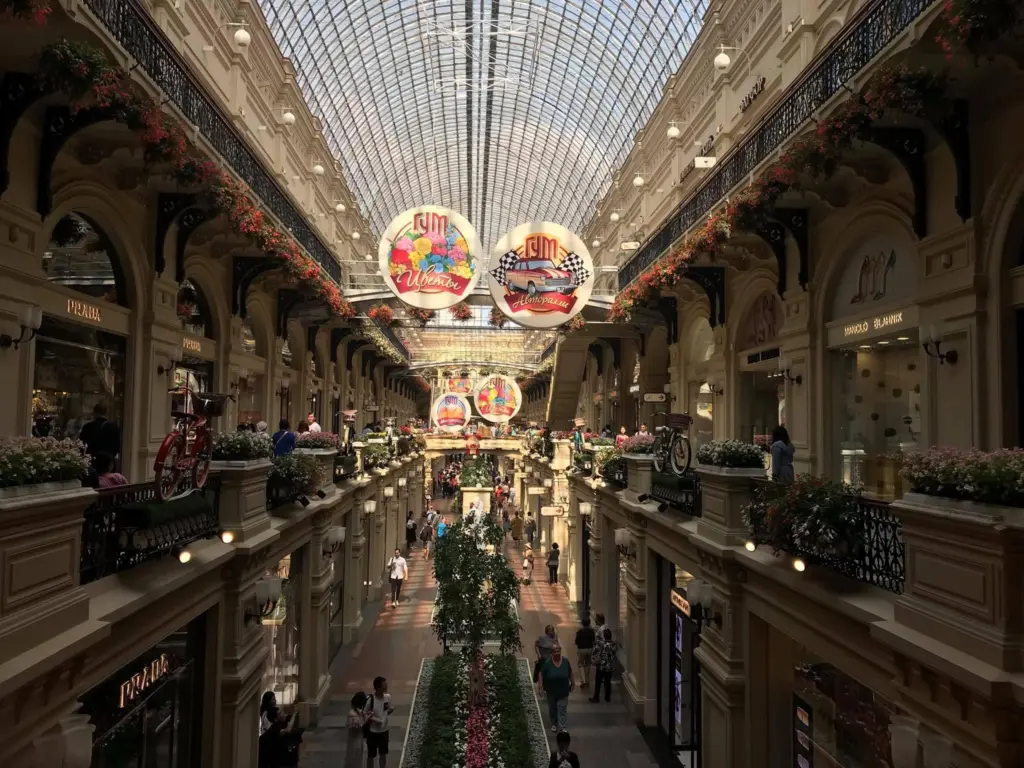
14. Shop til You Drop at Gum
GUM is Moscow’s iconic department store. A shopper’s paradise, combining luxury, history, and architectural grandeur. GUM itself is an acronym for “State Department Store” as in “Gosudarstvenny Universalny Magazin.” It is housed in a magnificent 19th-century structure that is a fine example of Russian neoclassical design.
Originally opened in 1893, GUM has long been a symbol of Moscow’s commercial prowess. The vast, glass-roofed arcade spans three parallel galleries, each lined with high-end boutiques and designer brands, offering everything from fashion and jewelry to gourmet foods and souvenirs. The interior, with its elegant arcades and intricate ironwork, is as much a draw as the shopping experience itself.

15. Watch Ballet at Bolshoi Theatre
Watching a ballet performance at the Bolshoi Theatre is a true cultural experience par excellence, immersing you in a world of artistic elegance. The Bolshoi, one of the oldest and most renowned ballet and opera companies in the world, is housed in a grand building that is itself a symbol of Russia’s rich theatrical tradition.
The theatre’s current building, designed by architect Joseph Bove and opened in 1825, is an exemplary work of Russian classical architecture. Its iconic facade, adorned with a majestic quadriga, and its opulent interior, with plush red velvet and gilded accents, set the stage for the spectacular performances that unfold within.
At the Bolshoi, you can witness world-class ballet performances that showcase the skill, grace, and emotional depth of its dancers. The company is renowned for its repertoire of classical ballets, such as “Swan Lake,” “The Nutcracker,” and “Giselle,” as well as modern productions. Watching a ballet at the Bolshoi is not just about the dance; it’s about experiencing the culmination of centuries of Russian cultural refinement.

16. Check Out the Armoury Chamber
The Armoury Chamber is a fascinating museum that houses an extraordinary collection of Russian state treasures and regalia.
As one of the oldest museums in Russia, the collection includes an impressive array of items once belonging to the Russian tsars and the Russian Orthodox Church.
Here, you can marvel at exquisite Faberge Eggs, each a masterpiece of craftsmanship. The collection also boasts ornate weaponry and fancy armor.

17. Hear the Bells at Ivan the Great Bell-Tower
Ivan the Great Bell-Tower, standing tall, is named after Ivan III (Ivan the Great). It has been a part of Moscow’s skyline since its completion in the 16th century. It was the tallest building in Russia during its time and served as a template for other bell-towers throughout the country.
The tower houses a remarkable collection of bells, each with its own history and tone. The largest bell, known as the Tsar Bell, is located at the base of the tower. Though it actually never rang due to damage during casting.

18. Stroll Around Zaryadye Park
Zaryadye Park is a modern urban park located a stone’s throw away from the Red Square.
Opened in 2017, this innovative public space blends nature, technology, and architecture in a unique way that redefines the concept of a city park.
Spanning over 35 acres, Zaryadye Park is divided into four climate zones, each representing different Russian landscapes: forest, steppe, tundra, and floodplains. These areas are meticulously landscaped to offer an immersive experience of Russia’s diverse natural environments.
One of the park’s most striking features is the “Floating Bridge,” which extends over the Moskva River, offering spectacular views of the Kremlin and central Moscow.
Zaryadye Park also houses the innovative Media Center, the Nature Center, and the Ice Cave, where you can learn more about Russia’s environment and history through interactive exhibits.

19. See the Changing of the Guard Ceremony at Tomb of the Unknown Soldier
In Moscow, one of the most solemn ceremonies you can witness is the Changing of the Guard at the Tomb of the Unknown Soldier.
Located in the Alexander Garden this memorial is dedicated to Soviet soldiers who fell during World War II. You can find the Eternal Flame in the center of the bronze five-pointed star which has burned on continously for more than 55 years!
The Changing of the Guard ceremony is a meticulously choreographed event, performed by the Kremlin Regiment. The ritual, which happens hourly, is a display of respect and honor to those who lost their lives in the war.
This ceremony is quite reminiscent of the Evzones changing of the guard at the Tomb of the Unknown Soldier in Athens, Greece. The Evzones being a next-level class of elite soldiers of the Greek army.

How to Get Around Moscow
Getting around Moscow is relatively straightforward, thanks to the city’s extensive and efficient public transportation system, complemented by other modes of transport. Here’s a guide to navigating the city:
Metro: The Moscow Metro is one of the most efficient, cost-effective, and visually stunning subway systems in the world. It’s known for its punctuality, extensive network, and beautifully decorated stations. The metro covers most areas of the city and is often the fastest way to travel, especially during peak traffic hours. It’s what I used to get to the Red Square and back to the airport, all seamless.
Buses, Trams, and Trolleybuses: Moscow’s bus network complements the metro, reaching areas that are not accessible by subway. Trams and trolleybuses are also a convenient way to travel, offering a good view of the city as you ride.
Taxi Services: Taxis are widely available in Moscow. For safety and convenience, it’s advisable to use ride-hailing apps like Yandex.Taxi or Gett. Avoid hailing cabs off the street to prevent overcharging.
Bicycle and Scooter Rentals: For short distances, renting a bicycle or an electric scooter can be a fun and efficient way to get around, especially during warmer months.
Car Rental: While renting a car is an option, it’s less recommended due to heavy traffic, especially during rush hours, and the complexity of navigating in a city where most signs are in Cyrillic.
For convenience, get a Troika card, a rechargeable smart card that can be used on the metro, buses, trams, and trolleybuses. It offers a cheaper fare than single tickets and can be purchased at metro stations.
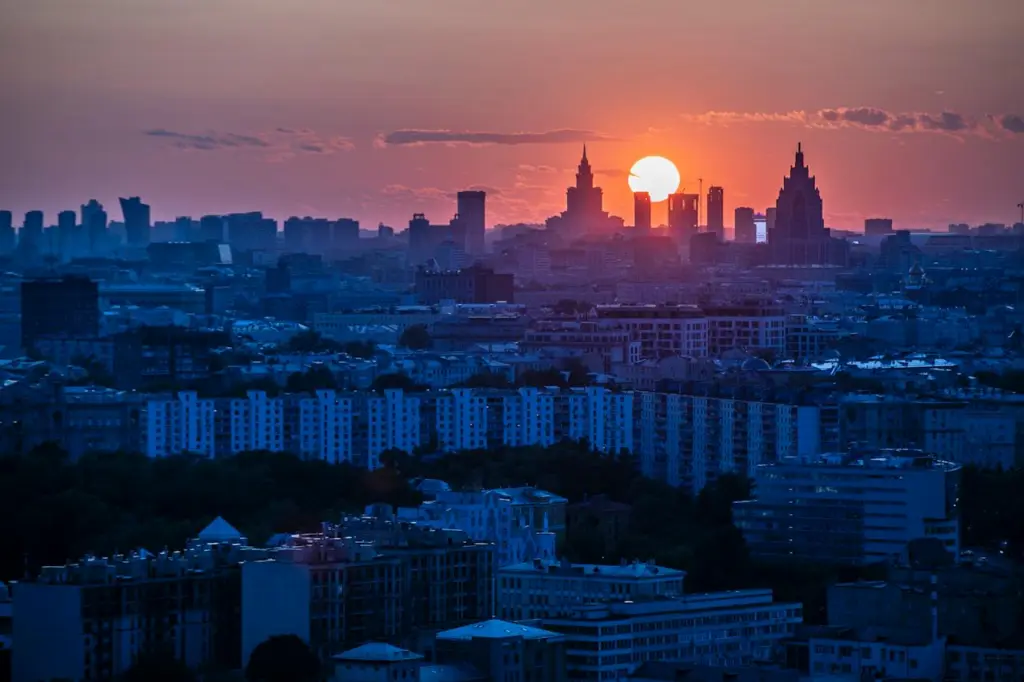
Best Time to Visit Moscow
The best time to visit Moscow is during late spring and early summer, from May to early June, or in early fall, around September. These months offer the most pleasant weather conditions and less crowded experiences.
In late spring, from May to early June, temperatures typically range from 10°C – 20°C (50°F – 68°F). The city comes alive with blooming flowers and green parks, perfect for outdoor activities. The days are longer, providing ample daylight for exploring the city’s landmarks.
Summer, from late June to August, sees warmer temperatures, averaging between 18°C – 25°C (64°F – 77°F). This is peak tourist season, so expect more crowds at popular attractions. The city hosts numerous festivals and outdoor events during this time.
Early fall, particularly September, is another ideal time to visit. The weather is still comfortable, with average temperatures ranging from 10°C – 15°C (50°F – 59°F). The autumn foliage provides a beautiful backdrop for sightseeing, and the city is less crowded compared to the summer months.
Winter in Moscow, from December to February, can be very cold, with temperatures often dropping below freezing, averaging around -10°C to -5°C (14°F – 23°F). While the snowy landscape is picturesque, and the city has a festive atmosphere, especially around New Year and Orthodox Christmas, be prepared for the biting cold.
Plan Your Trip to Russia | Best Travel Resources
Book Your Accommodations
- Booking.com – the world’s leading online booking platform for accomodations around the world, they have an extensive amount of available listings with zero booking fees and best price guarantees.
- Hostelworld – a backpacker’s best friend, Hostelworld has the largest collection of hostels and guesthouses for affordable prices.
Don’t Forget Insurance
- SafetyWing – from Nomad Insurance, an insurance by nomads for nomads. They understand our lifestyle well and have really comprehensive and flexible plans that cater to any traveler.
Find Cheap Flights
- Kiwi.com – my go-to for booking and finding the cheapest flights and it’s helped me save tons of money. They do virtual interlining which is connecting flights from airlines that do not codeshare, so you can find routes that you wouldn’t be able to find normally.
Join Tours & Activities
- GetYourGuide – is one of the best places to find unique tours and activities. I found that it’s an excellent way to meet fellow travelers and create fond memories. They are not only limited to tours as they also offer niche services such as skip-the-line tickets or private transfers.
Catch a Ride
- Rentalcars.com – nothing beats the freedom of the road, Rentalcars.com is the world’s largest online car rental service. They operate across 160 countries so they’re the perfect partner to work with if you find yourself wanting a ride.

